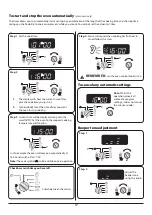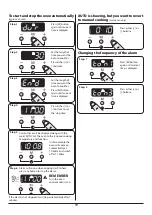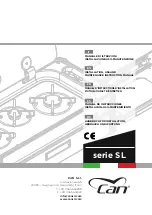
8
1
2
3
1
2
3
ArtNo.312-0008 Ceramic hob labelled
1.1kW
1.56kW
1.1kW/0.06kW (dual purpose)
0.11kW (warmer)
2.02kW
Zone 1
Zone 2
Zone 3
Zone 4
Zone 5
Zone 6
1.65kW
1.1kW
ArtNo.312-0007 Indicator light 110
The very best pans have bases that are very slightly curved up
when cold. If you hold a ruler across the bottom you will see
a small gap in the middle (
Fig. 2.3
). When they heat up the
metal expands and lies flat on the cooking surface.
Make sure that the base of the pan is clean and dry to prevent
any residue burning onto the hob panel. This also helps
prevent scratches and deposits.
ALWAYS
use pans that are the same size as (or slightly larger
than) the areas marked on the hob top (
Fig. 2.4
). Using
smaller pans wastes heat, and any spillage will be burnt on.
Using a lid will help the contents boil more quickly.
There are indicator lights for each of the cooking areas
(
Fig. 2.5
). The lights come on when a hob control is turned on
and stays lit while the surface cools.
n
ALWAYS take care before touching the surface, even
when the hob is turned off – it may be hotter than
you think.
The ratings of the different cooking areas are shown in (
Fig.
2.6
). These ratings are specified at 230 V.
When cooking on the hob, you may see the hob area you
are using switch off and on: this is caused by a safety device
that limits the temperature of the hob. This is quite normal,
especially when cooking at high temperatures. If it happens
a lot with a particular pan, however, it may mean the pan is
not suitable – perhaps too small or too uneven – for a ceramic
hob.
Dual element hob plates
The areas marked with two concentric circles have an inner
and an outer element. Rotate the control knob clockwise to
heat the whole area for larger pans; turn it counter-clockwise
to just heat the inner part for smaller pans (
Fig. 2.7
).
Fig. 2.5
Fig. 2.6
Fig. 2.7













































